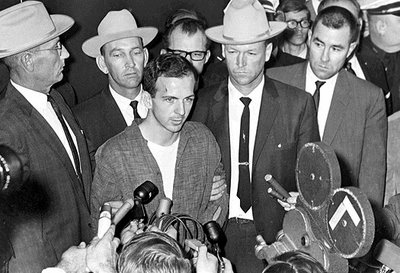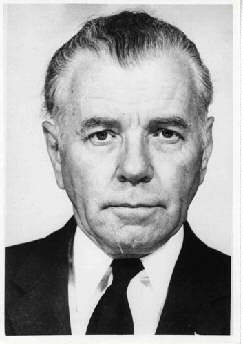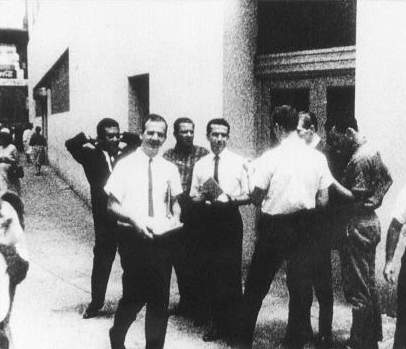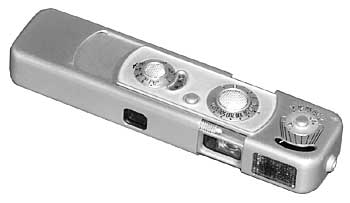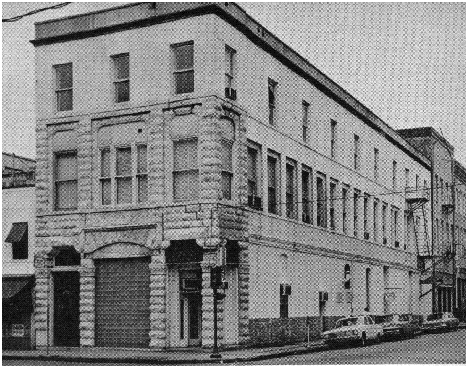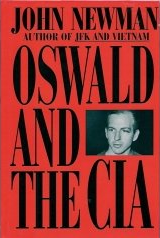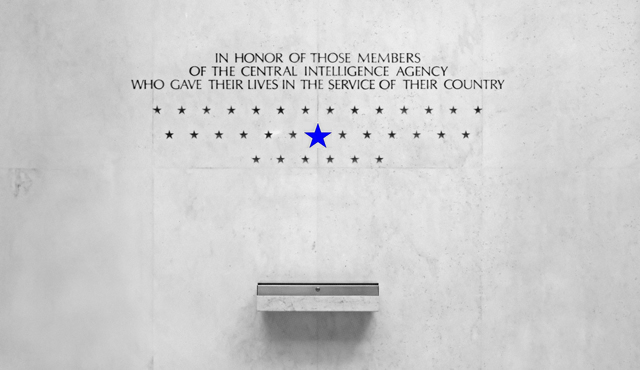|
Lee Harvey Oswald — The Patsy
"The thing I am concerned about, and so is [Deputy Attorney General Nicholas] Katzenbach, is having something issued so we can convince the public that Oswald is the real assassin." --FBI Director J. Edgar Hoover, speaking on the telephone to Lyndon Johnson aide Walter Jenkins two hours after Oswald was murdered by Jack Ruby, HSCA Report, vol. III, pp. 471-73. (The Warren Commission -- charged with determining the truth in the JFK assassination -- relied upon Hoover's FBI as its primary investigative arm.) "At the first meeting of the newly constituted Warren Commission, [former CIA Director] Allen Dulles handed out copies of a book to help define the ideological parameters he proposed for the Commission's forthcoming work. American assassinations were different from European ones, he told the Commission. European assassinations were the work of conspiracies, whereas American assassins acted alone." --Peter Dale Scott, Deep Politics and the Death of JFK "We have not been told the truth about Oswald." --Senator Richard Russell, former Warren Commission member, conversation with researcher Harold Weisberg in 1970, Whitewash IV "Lee Harvey Oswald is a question mark to history. The debate is often raised: 'Was Lee Harvey Oswald alone as the assassin, or was he part of a conspiracy?' The question is never raised: 'Is it possible he didn't do it at all?'" --Robert Groden, assassination researcher, interviewed in the documentary, The Men Who Killed Kennedy: Part 4: The Patsy
The following transcribed text is from the documentary, The Men Who Killed Kennedy: Part 4: The Patsy NARRATOR: One person with no illusions about Oswald's role [as a patsy for JFK's real killers] launched his own investigation into the Kennedy assassination in 1967, the former District Attorney of New Orleans, Judge Jim Garrison. GARRISON: [Oswald] was employed by the Central Intelligence Agency and was obviously drawn into a scapegoat situation and made to believe ultimately that he was penetrating the assassination. And then when the time came, they took the scapegoat -- the man who thought he was working for the United States government -- and killed him real quick. And then the machinery, disinformation machinery, started turning and they started making a villain out of a man who genuinely was probably a hero. NARRATOR: Six months before the assassination, Oswald had taken a mundane job [in New Orleans] with the Reily Coffee Company. But it seems his real activities were centered a few blocks away. From a small office on the corner of Lafayette and Camp Street, Oswald managed a local chapter of the pro-Castro Fair Play For Cuba Committee. Operating from an adjoining office was a sinister figure named Guy Banister.
GARRISON: Guy Banister -- it's difficult to say much about him, because he always stood in the shadows and pushed someone else to the front. He was a strongly disciplined man, perhaps the outgrowth of his many years as a special agent in charge of the Chicago office of the FBI. But he was a key man in the assassination, and that's clear from the fact that Oswald's "sheep-dipping" -- his being portrayed as a Communist -- was done out of Guy Banister's office. So he was sheep-dipped for months as a Communist by giving literature: "Lee, hand this out today. This is your assignment." I came across the fact that Oswald, a private in the Marines, had taken a Russian examination. And I knew that privates did not take Russian examinations unless they were connected with intelligence. So that caused me to be curious about 544 Camp, which was the address stamped on one circular that he gave out one time before, obviously, Banister told him, "Lee, no more addresses." It turned out that was a side address of Guy Banister's private detective agency.
Well I went down there to look at it, and I found myself not merely outside of Guy Banister's office, but across the street from Naval Intelligence, across the street from Secret Service, around the corner was the Crescent City Garage, the garage for the intelligence community and then, two doors away, the Reily Coffee Company. I used to be in the FBI. I knew people in Naval Intelligence and they were either across the street, around the corner -- the whole intelligence community was there, and right in the middle of it was Guy Banister having Oswald sheep-dipped as a Communist.... When the President ends up being assassinated and the scapegoat grabbed by the federal government, and killed before anything can be done to help him, turns out to be the man that Guy Banister had been the tutor of all the time, you have to conclude that Guy Banister was a key man in the assassination and, possibly, the most important man that we encountered in our whole investigation. But, he's been dead so many years, it's a little hard to question him.
"The Report of the Warren Commission infers that Oswald somehow must have learned Russian on his own, ostensibly in preparation for his forthcoming defection. Actually, Oswald was taught Russian by the United States government, as is indicated by Lieutenant Colonel Folsom's testimony during which he happened to refer to one of Oswald's grades in a U.S. Armed Forces Russian examination (Volume VIII, p. 307). The formal designation for this Russian examination was "Department of the Army, Adjutant General's Office, PRT-157. Oswald took the Russian examination on February 25, 1959, while stationed at El Toro Marine Base in California." --Jim Garrison, District Attorney of New Orleans, Press Release, 21 February 1968 "On at least two separate occasions, Banister employees saw Oswald handing out pro-Castro literature and reported it to their boss. In one instance Banister simply laughed, and on the other, he told his secretary Delphine Roberts: 'Don't worry about him.... He's with us. He's associated with the office.' Roberts also said she saw Oswald at 544 Camp Street, and that he filled out one of Banister's 'agent' application forms." --Jim Marrs, Crossfire: The Plot that Killed Kennedy Delphine Roberts told author Anthony Summers: "Oswald came back a number of times. He seemed to be on familiar terms with Banister and with the office. As I understood it, he had the use of an office on the second floor, above the main office where we worked.... Then, several times, Mr. Banister brought me upstairs, and in the office above I saw various writings stuck up on the wall pertaining to Cuba. There were various leaflets up there pertaining to Fair Play for Cuba.'" --Anthony Summers, Not in Your Lifetime "Delphine Roberts, Banister's long-time friend and secretary, stated to the [House Select Committee on Assassinations] that Banister had become extremely angry ... over Oswald's use of the 544 Camp Street address on his [Fair Play for Cuba] handbills." --House Select Committee on Assassinations - Appendix to Hearings, Volume 10, 13, p. 128 "They are the most ruthless motherf---ers there are and if they want to get somebody, they will. They will do their own people up." --David Sanchez Morales, talking about the CIA, (Morales was the Chief of Operations at the CIA station in Miami -- JM/WAVE -- and a consultant to the Deputy Director of the Joint Chiefs), cited by Gaeton Fonzi, The Last Investigation "We do know Oswald had intelligence connections. Everywhere you look with him, there're fingerprints of intelligence." --Republican Senator Richard Schweiker, member of the U.S. Senate Select Committee on Intelligence, The Village Voice, 15 December 1975 "The question of whether Oswald had any relationship with the FBI or the CIA is not frivolous. The agencies, of course, are silent. Although the Warren Commission had full power to conduct its own independent investigation, it permitted the FBI and the CIA to investigate themselves -- and so cast a permanent shadow on the answers." --Walter Cronkite, CBS News anchor, 28 June 1967 "I think the [Warren] report, to those who have studied it closely, has collapsed like a house of cards ... the fatal mistake the Warren Commission made was to not use its own investigators, but instead to rely on the CIA and FBI personnel, which played directly into the hands of senior intelligence officials who directed the cover-up." --Republican Senator Richard Schweiker, member of the U.S. Senate Select Committee on Intelligence, speaking on the CBS News program Face the Nation, 27 June 1976 "If he had it to do over again, he would begin his investigation of the Kennedy assassination by probing 'Oswald's ties to the Central Intelligence Agency.'" --Richard Sprague, first staff director and chief counsel to the U.S. House Select Committee on Assassinations, statement to Sam Anson of New Times magazine, cited by Gaeton Fonzi, The Last Investigation "[Lee Oswald's mother] Mrs. Marguerite Oswald frequently expressed the opinion that her son was recruited by an agency of the U.S. Government and sent to Russia in 1959, but she stated before the Commission that 'I cannot prove Lee is an agent.'" --Warren Commission Report, Appendix XII: Speculations and Rumors, Oswald and U.S. Government Agencies, p. 660 "It was common knowledge in the Tokyo CIA station that Oswald worked for the agency.... Right after the President was killed, people in the Tokyo station were talking openly about Oswald having gone to Russia for the CIA. Everyone was wondering how the agency was going to be able to keep the lid on Oswald. But I guess they did." --interview of Jim and Elsie Wilcott, former husband and wife employees of the Tokyo CIA Station, San Francisco Chronicle, "Couple Talks about Oswald and the CIA," 12 September 1978 "Oswald, it was said, was the only Marine ever to defect from his country to another country, a Communist country, during peacetime.... When the Marine Corps and American intelligence decided not to probe the reasons for the 'defection,' I knew then what I know now: Oswald was on an assignment in Russia for American intelligence." --James Botelho, former roommate of Oswald who would later become a California judge, interview with assassination researcher Mark Lane "[Former CIA Director Richard] Helms told reporters during a break that no one would ever know who or what Lee Harvey Oswald ... represented. Asked whether the CIA knew of any ties Oswald had with either the KGB or the CIA, Helms paused and with a laugh said, 'I don't remember.'" --Richard Helms, chatting with the Washington Post's George Lardner and other reporters in 1978, during a recess of the U.S. House Select Committee on Assassinations, cited by Gaeton Fonzi, The Last Investigation "After the assassination the public was burdened with no quandary. Wherever the guilt really lay, the man identified as killing President Kennedy was stamped as a disciple of the extreme left. Rightly or wrongly, the political left was implicitly convicted along with Oswald. Was that verdict just, or were Oswald and his apparent heroes victims of a vicious double-cross by forces of the extreme right?" --Anthony Summers, Not in Your Lifetime "I no longer believe that we were able to conduct an appropriate investigation of the [Central Intelligence] Agency and its relationship to Oswald.... I do not believe any denial offered by the Agency on any point. The law has long followed the rule that if a person lies to you on one point, you may reject all of his testimony.... We now know that the Agency withheld from the Warren Commission the CIA-Mafia plots to kill Castro. Had the commission known of the plots, it would have followed a different path in its investigation.... We also now know that the Agency set up a process that could only have been designed to frustrate the ability of the committee in 1976-79 to obtain any information that might adversely affect the Agency. Many have told me that the culture of the Agency is one of prevarication and dissimulation and that you cannot trust it or its people. Period. End of story. I am now in that camp." --Robert Blakey, staff director and chief counsel for the U.S. House Select Committee on Assassinations, statement from 2003 "I have felt, I always felt, a sympathy for Oswald, and I just don't feel it's right that he would be, or his children should be, stuck with that stigma, that's all." --Chauncey Holt, CIA contract agent and Mafia associate (also identified as one of the "three tramps" photographed in Dealey Plaza), video interview, 20 June 1997 "Lee Oswald was totally, unequivocally, completely innocent of the assassination. And the fact that history -- or in the rewriting of history -- has made a villain of this young man, who wanted nothing more than to be a fine Marine, is in some ways the greatest injustice of all." --Jim Garrison, District Attorney of New Orleans, interviewed in the documentary, The Men Who Killed Kennedy: Part 4: The Patsy
For more information on Guy Banister's 544 Camp Street office click below: Let
Justice Be Done: The Return of Lee Harvey Oswald
How the Mainstream Media Lies about the Kennedy Assassination
|
